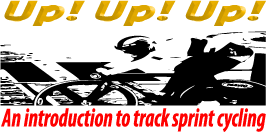Overview
Our hybrid program is an evolution of the previous intensity and capacity programs, taking on board the premise of Charlie Francis' sprint programming for track and field athletes. Roughly summarised, it is :
"Do everything, all the time, change the emphasis and monitor recovery closely"
Essentially this means don't do classical periodisation. It doesn't work for sprint athletes (whether it works or not for enduros, we don't know, but suspect similar).
We also use our target cadence method, which gives every training effort a measurable goal. We don't turn a pedal without a purpose.
We also work on the assumption that high power cadences are very much innate and we can't train them very much, but we can improve torque and to an extent, our anaerobic capacity, so an outline of this program is roughly :
Every week we do a little bit of everything; strength (both specific, on the bike, and general, in the gym), power (on the bike, targetting peak powers around 90-130rpm), high cadence (~130-150rpm) and anaerobic capacity (efforts greater than 12 seconds, with varying recovery periods). Skill work and tactical play every session on the track - EVERY SESSION!
We prioritise, by doing the thing we want to emphasise, first in a session, or if we're doing multiple sessions on consecutive days, in the first day. Fatigue will impact on our quality and we want top quality for the thing we're emphasising. Except capacity ... we almost always do capacity last as it can be trained when fatigued and it wrecks everything else we do afterwards.
When we describe efforts, we do not supply gears - the athlete chooses the gear to use themselves, based on an estimate of what they think they can achieve. If, for example, the effort is a 125m (1/2 lap) RAC starting from 40 rpm and with a target of 110, the athlete chooses a gear and tries to meet the goal. If they get it, the next effort, they increase the gear (typically by 2"). If they don't, by a little bit, they try again. If they miss by a lot, use a smaller gear. This gives the effort a defined goal to aim for. There are a number of variables we manipulate to change the emphasis as follows;
- Starting cadence (lower means more emphasis on torque/strength)
- Target cadence (higher means more emphasis on speed)
- Distance (less means more emphasis on acceleration or intensity, longer means more emphasis on endurance)
- Recovery time between efforts
- Number of efforts
- Location on track - we will manipulate this to work on the skills required to accelerate at various parts of a velodrome
